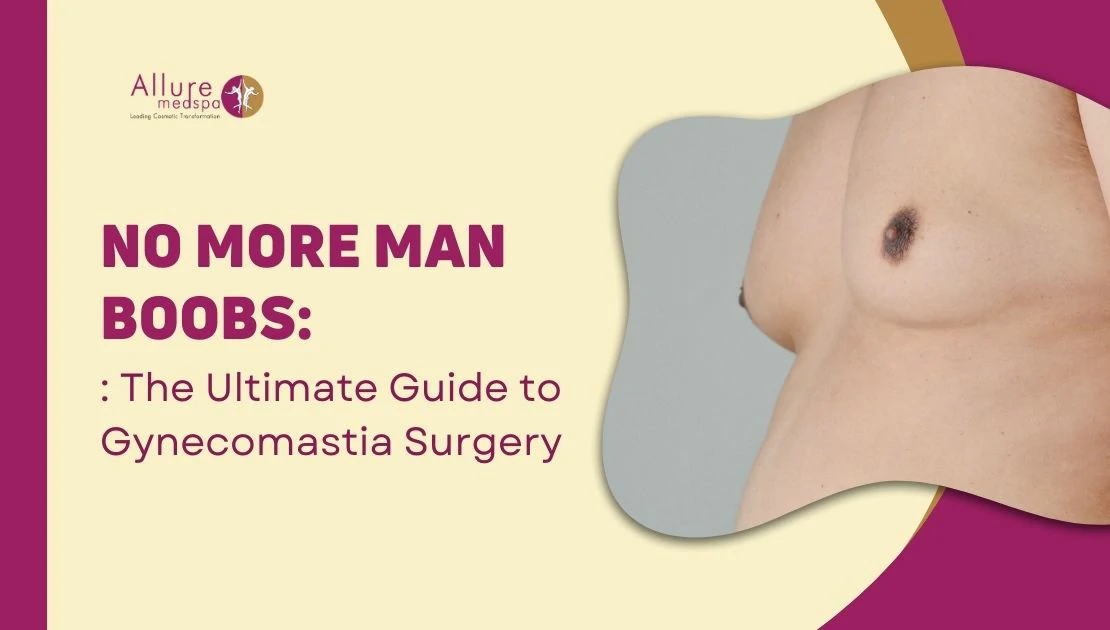Achieve a Flatter, More Masculine Chest with Gynecomastia Surgery
Understand causes, treatment options, preparation steps, risks, recovery, costs, and how to choose the right surgeon.
Contents
- Understanding Gynecomastia
- Gynecomastia Surgery Explained
- Preparing for Surgery
- Types of Gynecomastia Surgery
- Risks & Complications
- Recovery & Aftercare
- Choosing a Qualified Surgeon
- Get a Tailored Cost Estimate
- Final Thoughts
- About Dr. Milan Doshi
- Contact Us
- FAQs
Understanding Gynecomastia
Gynecomastia, commonly referred to as “man boobs,” is the benign enlargement of glandular breast tissue in males. It can affect teens and adults and is most often linked to hormonal imbalance—changes in the relative levels or activity of estrogen and testosterone.
While lifestyle changes or medications may help in select cases, surgery is often the most effective and permanent solution for a flatter chest and restored confidence.
Gynecomastia Surgery Explained
Also called male breast reduction, gynecomastia surgery removes excess fat and glandular tissue to create a more sculpted, masculine chest. For persistent gynecomastia, the procedure can be physically and emotionally transformative.
Preparing for Surgery
- Medical evaluation: Your surgeon may order lab tests to assess overall health and suitability.
- Medication management: Follow instructions on any medicines to pause or adjust before surgery.
- Quit smoking: Stop at least a few weeks before and after surgery to support healing.
Types of Gynecomastia Surgery
Liposuction
Removes excess fat through tiny incisions using a cannula. Best for patients with good skin elasticity; scarring is minimal.
Excision
Removes glandular tissue via small, discreet incisions. Indicated for firmer tissue that liposuction alone cannot address.
Combination Approach
Many cases benefit from both excision and liposuction for optimal contouring. If sagging is present, nipple-areolar repositioning may be added.
Risks & Complications
- Clotting & bleeding: Rare but possible.
- Asymmetry: Minor differences may require touch-ups.
- Bruising & scarring: Typically temporary; scars fade over time.
- Infection: Uncommon with proper care.
- Sensation changes: Temporary or (rarely) persistent numbness can occur.
Recovery & Aftercare
Most patients return to desk work in 1–2 weeks. Swelling and soreness are expected initially and improve steadily. Avoid strenuous workouts for ~6 weeks. Final results are typically appreciated by 3–6 months as swelling settles.
Choosing a Qualified Surgeon
- Board certification: Verify recognized certification in plastic surgery.
- Experience: Choose a surgeon with a strong portfolio in gynecomastia cases.
- Reviews & photos: Review patient testimonials and before/after galleries.
Get a Tailored Cost Estimate
Fees vary based on technique, surgeon experience, anesthesia, and facility. Speak with our team for a personalized quote.
Final Thoughts
Gynecomastia surgery is a life-changing option for men with persistent chest enlargement. It restores a masculine contour, elevates confidence, and supports overall well-being. If you’re ready to move forward, consult a qualified surgeon to tailor a plan to your goals.
About Dr. Milan Doshi
Dr. Milan Doshi is a board-certified plastic surgeon with over 11,000 cosmetic procedures performed, including 1,400+ gynecomastia surgeries. His patient-centered approach and refined technique make him one of Mumbai’s trusted surgeons for male chest contouring.
Contact Us
Speak to Our Friendly Advisers: +91 82918 63159
Quick WhatsApp: +91 99875 71559
Frequently Asked Questions (FAQs)
Q1. Is gynecomastia surgery permanent?
Ans. Yes. With stable weight and avoidance of hormone-disrupting drugs, results are typically long-lasting.
Q2. Will I have visible scars?
Ans. Incisions are small and placed discreetly. Most scars fade significantly over time with proper care.
Q3. How soon can I exercise after surgery?
Ans. Gentle walking is encouraged early. Avoid intense workouts for about 6 weeks or as advised by your surgeon.
Q4. Is the procedure painful?
Ans. The surgery is performed under anesthesia. Post-operative discomfort is usually mild to moderate and managed with medication.
Q5. Can gynecomastia come back?
Ans. Recurrence is uncommon unless significant weight gain or new hormonal imbalance occurs.











